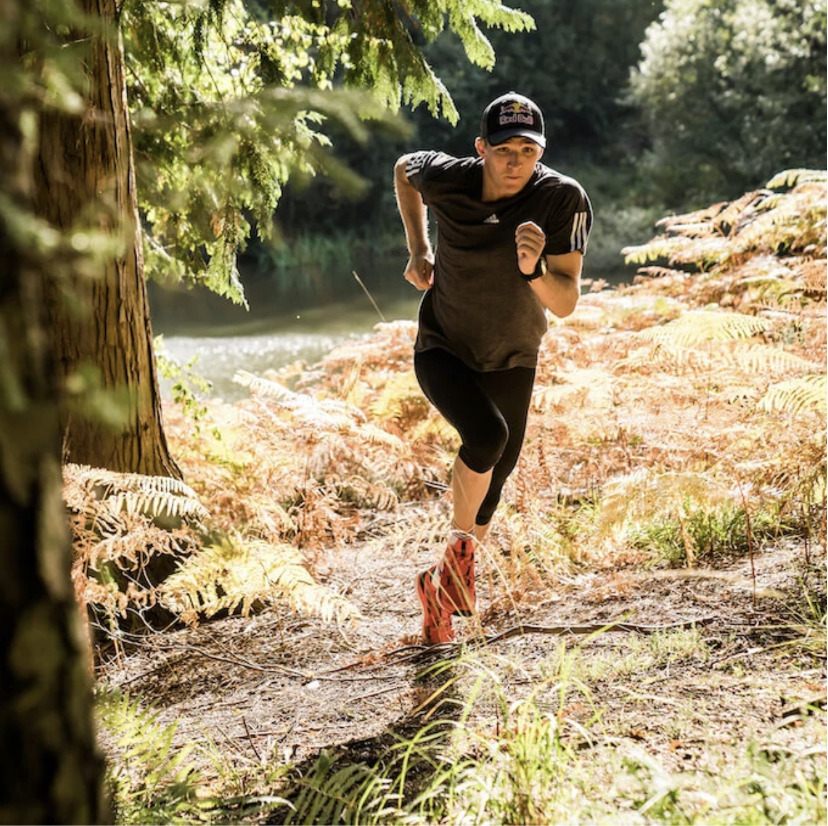Why Even Ultra Runners Need Speed Work
By: Jack Kuenzle
Posted:
When we begin coaching a new ultra-runner, one of the first things we prescribe is short, fast strides and short, near-maximum-effort hill sprints. These efforts rarely exceed 15 seconds, and most ultra-runners, often training for efforts in excess of 20 hours, discount their importance. But, as this article will argue, these workouts are critical for improving power and running-specific strength, leading to improvements in stride length, economy, and speed at all intensity levels.
Power is the rate at which force can be applied. A very strong athlete may not be very powerful if their movements are slow. And a very powerful athlete need not be particularly strong. This is why general strength training, built through traditional movements in the weight room, is useful only up to a point for improving an athlete’s speed. An athlete can build an enormous amount of muscle bulk and general strength. Still, if the brain isn’t trained to recruit those fibers in a running-specific, coordinated, powerful movement pattern, that strength will not lead to improved running performance. This is the difference between being gym strong and running strong. Training running strength and power is done using exercises that mimic quite closely (exactly, in some cases) the propulsive movements of the sport.
You can be forgiven for thinking that this type of strength/power training is exclusively relevant to sprinting. It directly affects an athlete’s performance at every distance, as increased power manifests itself in longer strides. When an athlete takes thousands of strides, even a tiny increase in stride length will result in a significant performance gain. Let’s do some back-of-the-envelope arithmetic for an athlete training for a 20-mile (32-kilometer) run. If their current stride (two foot strikes) is 2 meters, they will take 16,000 strides. Say the athlete increases their stride length by 5 centimeters (0.04 meters or one inch). That’s 16,000 strides that are 0.04 meters or one inch longer. This puts the more powerful version of the same athlete 640 meters/2,100 feet—and potentially minutes—ahead of the less powerful version.

One of the most effective ways to develop running-specific power is hill sprints. Power training requires repetitions of very short duration (8 to 10 seconds), but at near the maximum intensity an athlete can produce, broken up by periods of complete recovery (2 to 3 minutes). Utilize a hill at least 20 percent in grade with good footing—alternatively, steep stairs taken two or more at a time work very well for this exercise. After a good warm-up, start with six to eight repetitions with a 2-to-3-minute rest in between. Many endurance athletes struggle to adhere to the rest intervals, but these are critical to allow maximum power to be generated on each repetition. The workout is finished when the athlete can no longer reach the same distance that they hit on the first few. If these feel easy, as they often do for endurance athletes not trained for power, the athlete will see good gains from power training. As the athlete gets more powerful, these will become increasingly fatiguing, often leaving their legs wobbly.
Hill sprints can be used during any phase of training, and many of our athletes use them year-round.

These can also be implemented year-round with little cost and significant gains. Strides are short, less than 20 seconds, accelerations done with long-distance running form, not full sprints. These can be sprinkled throughout a regular aerobic base run, compressed into the last 10-20 minutes, or after the run while the athlete is still warm. It’s important to ease slowly into these; use 5-10 seconds to come up to pace. Pick up the pace to a fun, fast effort. Run tall through the hips, with a slight forward lean from the ankles, and focus on maintaining the form and speed you’d use running a fast kilometer or mile. Don’t run these like a 100m sprint. Resist using excessive arm drive or high turnover and instead focus on increasing stride length and knee drive. Rest for one to two minutes and repeat for four to eight strides.
The wrong way to increase stride length is to reach well out in front of your body’s center line (as seen from the side) with the foot. This is called overstriding and is usually accompanied by the heel striking the ground first and applying a significant braking force through the leg. The ground contact time in this type of stride is longer than ideal as it takes time for the foot to move into a position under the hips where backward pushing power can be applied. Overstriding is inefficient, increases the impact load, and can lead to overuse injuries.
Instead, the forward foot should strike the ground directly under that center line referred to above. This immediately puts the foot and leg muscles into a position where propelling forces can be applied.